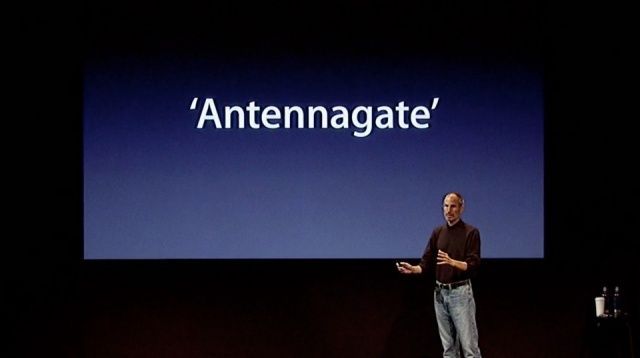 July 12, 2010: The iPhone 4 suffers a major blow when respected trade publication Consumer Reports says it can’t, in good faith, recommend the new Apple smartphone.
July 12, 2010: The iPhone 4 suffers a major blow when respected trade publication Consumer Reports says it can’t, in good faith, recommend the new Apple smartphone.
The reason the magazine refuses to give its vaunted “recommended” label to the previously top-ranked device? A little Apple scandal called “Antennagate.”
Consumer Reports shuns iPhone 4
All was good with the iPhone 4 when it launched in early June 2010. The critically acclaimed phone became a hit, smashing records for preorders and opening-weekend sales.
The problem surfaced when a few customers began to experience dropped calls. The glitch proved most noticeable when the iPhone 4 was held in a user’s left hand, so that their palm covered the handset’s tiny antenna gap.
Apple design chief Jony Ive’s decision to remove the previous iPhone’s plastic antenna band for aesthetic reasons caused the problem. The controversy, dubbed “Antennagate,” quickly took on a life of its own, thanks in part to Consumer Reports’ testing.
At first, the publication said Antennagate’s root cause was nothing serious:
“There’s no reason, at least yet, to forgo buying an iPhone 4 over its reception concerns. And even if those do materialize, Apple’s Steve Jobs helpfully reminds new iPhone buyers that ‘you can return your undamaged iPhone to any Apple Retail Store or the online Apple Store within 30 days of purchase for a full refund.'”
A day later, on July 12, Consumer Reports changed its stance after carrying out extended laboratory testing:
“It’s official. Consumer Reports’ engineers have just completed testing the iPhone 4, and have confirmed that there is a problem with its reception. When your finger or hand touches a spot on the phone’s lower left side — an easy thing, especially for lefties — the signal can significantly degrade enough to cause you to lose your connection altogether if you’re in an area with a weak signal. Due to this problem, we can’t recommend the iPhone 4.”
iPhone 4 Antennagate aftermath
In the aftermath of the Antennagate firestorm, Apple CEO Steve Jobs flew back early from a family holiday in Hawaii to stage a press conference. He stood by the iPhone 4 (even playing a fan-made song defending it), but honestly addressed the problem — and offered a solution.
Apple gave customers affected by Antennagate free cases and bumpers, while future versions of the iPhone corrected the flaw.
A bit like the “Bendgate” problem that followed in 2014 with the iPhone 6 Plus, Antennagate was overblown. The problem only affected about one iPhone call in a hundred. However, it made headlines — and even triggered a class-action lawsuit.
Antennagate wasn’t Apple’s first mistake after Jobs’ return. But it did highlight the scrutiny the company faced as it transitioned into the world-straddling tech giant it is today. It also raised valid questions about the tradeoff between creating beautiful products and ones that “just work.”
Do you remember Antennagate? Leave your comments below.


